My Quest for Badger
Scouring Carrizo Plain for
These Hoarders of the High Veld
Story and Photos by Chuck Graham | June 8, 2023
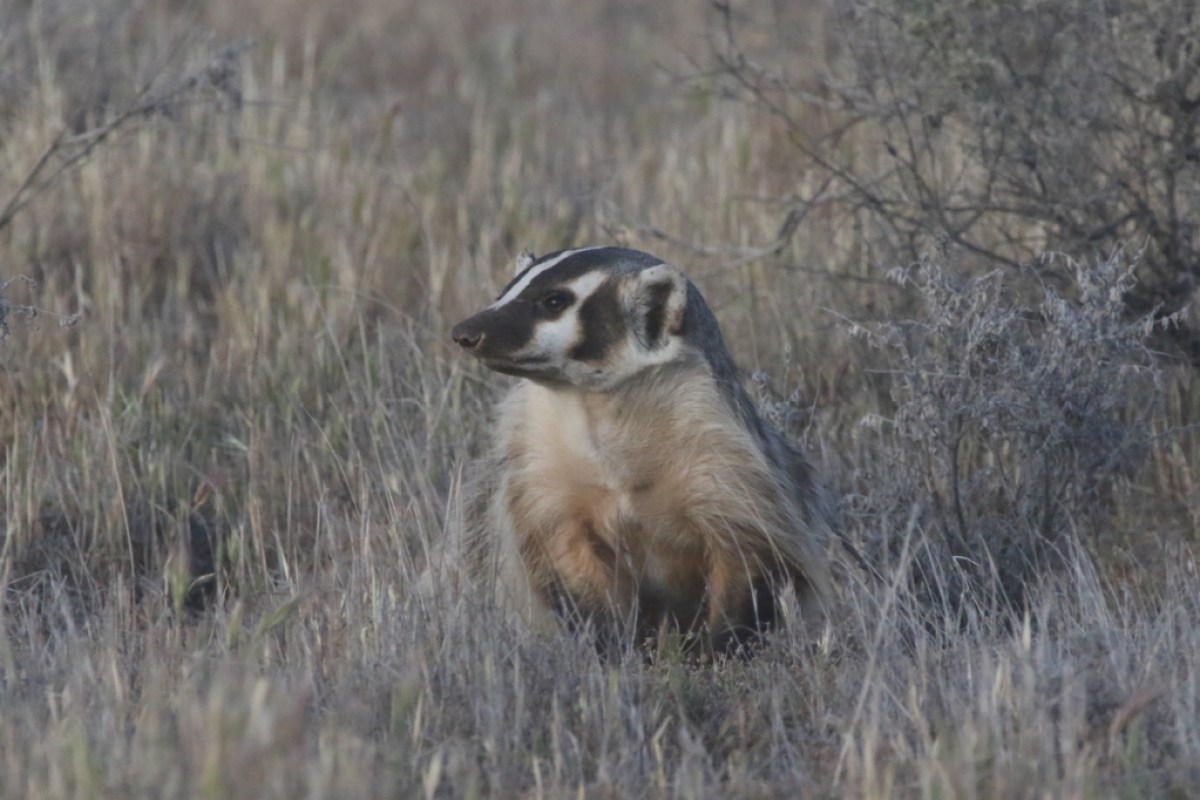
Read more of our Blue & Green 2023 stories here.
It was mid-May 2022, and the text came in at 11 p.m. as I was driving south across the Carrizo Plain National Monument.
“I have a badger,” wrote my friend, the wildlife cinematographer Mark Romanov, who was heading north into the monument. “I’ve got some new tools.”
I wasn’t sure what that meant, but I was intrigued. He pinpointed his location on Soda Lake Road, a track I tend to drive at a snail’s pace. But photographing badgers had eluded me ever since I began visiting this last stretch of California’s semi-arid grasslands back in 2006, so I drove faster than normal.
I’d spotted badgers in the past but never had a chance to even raise my camera in their direction. They always proved to be elusive, usually hunkering down in one of their subterranean dens to avoid detection.
Roadside Woes
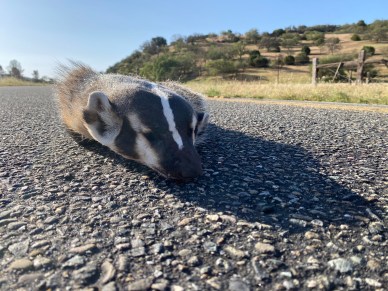
In April 2022, my girlfriend and I had a somber badger encounter while on the way to Pinnacles National Park. Driving along country roads bordered by agricultural lands and riparian corridors, we suddenly came to a screeching halt.
There was a dead badger lying on the deserted road. It was stiff from the cold, its eyes glassy and lifeless. It had been struck by a car, although its entire body was whole — another wildlife casualty of the open road.
I picked it up, set it down well off the shoulder in the brush, and suddenly felt cursed to have never encountered a live version of the American badger, one of the more cantankerous mammals on our continent. That fateful text from Romanov came about a month later.
Burning the Midnight Oil
Around midnight, I found Romanov preparing his camera traps, and he handed me an impressive-looking pair of binoculars. “Have a look through those,” he said. “Tell me what you see.”
What I saw was a very busy night out on the last of California’s semi-arid grasslands. Romanov’s high-end, thermo-seeking binoculars were a game-changer for locating nocturnal activity. There were at least a dozen endangered giant kangaroo rats hopping frantically from burrow to burrow. When coyotes sounded off, they brightened that much more during each yelp. Several kit foxes foraged for prey, and then there was the lone badger digging furiously, freshly dug dirt flung beneath a starry night.
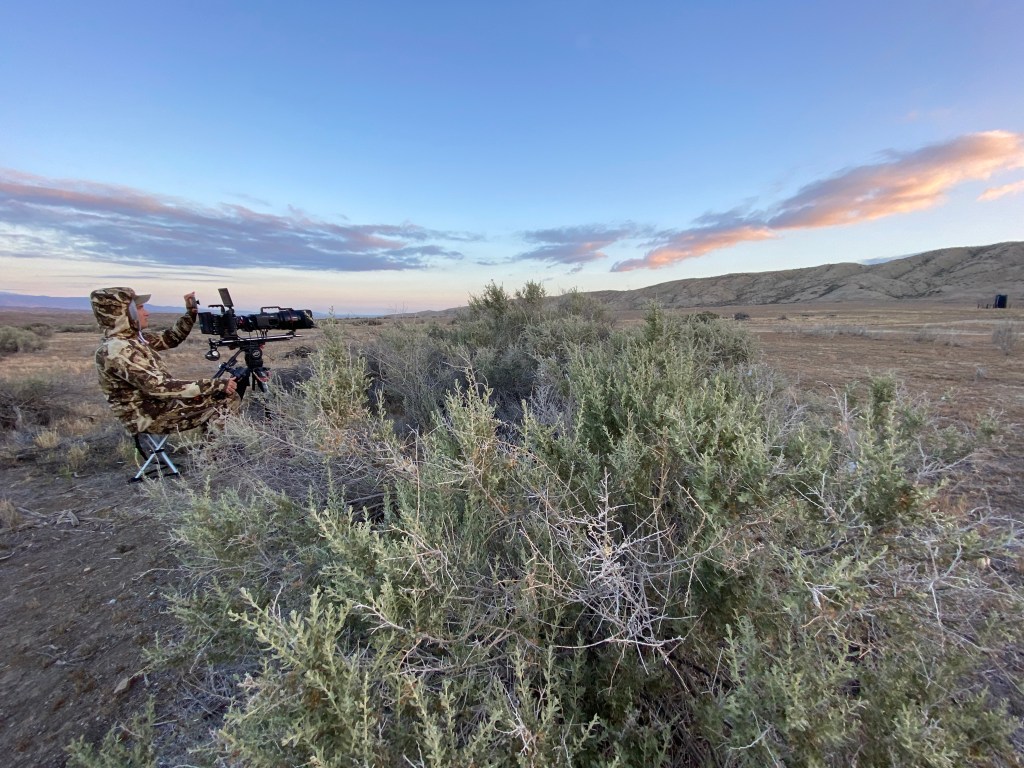
Romanov first spotted it crossing Soda Lake Road before it connected with its two kits at their den. With his binos, he kept tabs on the badger as it traveled through the brush for about 100 feet to what he thought was another den site. After helping him set up the camera traps, we retreated to our vehicles to sleep until 4 a.m.
Creeping back in the dark, we situated ourselves in a patch of saltbush. Although we were concealed by the minty-colored flora, we had great visuals of the den with two kits, and the den the female badger was still excavating.
Through the high-powered optics, we watched her digging feverishly about 75 feet away. The den housing the two kits was only 30 feet from us. By 5:30 a.m., we could see without the binos, and the badger surprised us at first light.
Low Crawl Cache

For several moments, the female badger vanished from view. She’d been digging for hours, but it wasn’t to construct an alternate den site. She had kits to feed, evident when she reemerged with an unlucky California ground squirrel in her jaws. However, instead of carrying it to her kits, she ran off and stashed it nearby. Badgers are known for hoarding food.
She quickly returned to what we knew then to be the former den of that California ground squirrel. She dug some more, but mostly she rolled and seemed to revel in the freshly dug dirt. Then she turned her attention toward us. Badgers don’t have the best eyesight, but she sensed something was awry in the saltbush. We didn’t budge, but she low-crawled over to investigate several times, one time slinking within 20 feet of us, and then rambled back to the fresh mound of soil.
Her two kits also popped out of their underground dwelling, playfully nuzzling each other. She then circled around us, slinking the whole way to greet her offspring.
By 7:30 a.m., she and her kits were underground again, probably for the day. Looking at some of the footage from Romanov’s camera traps revealed that mama badger had pulled an all-nighter. She had nabbed a giant kangaroo rat for the kits to feast on before she went back to the ground squirrel.
We were ecstatic. The badger, one of the hardest-to-find terrestrial residents across the grasslands, delivered a rare natural moment on the Carrizo Plain neither of us would soon forget.
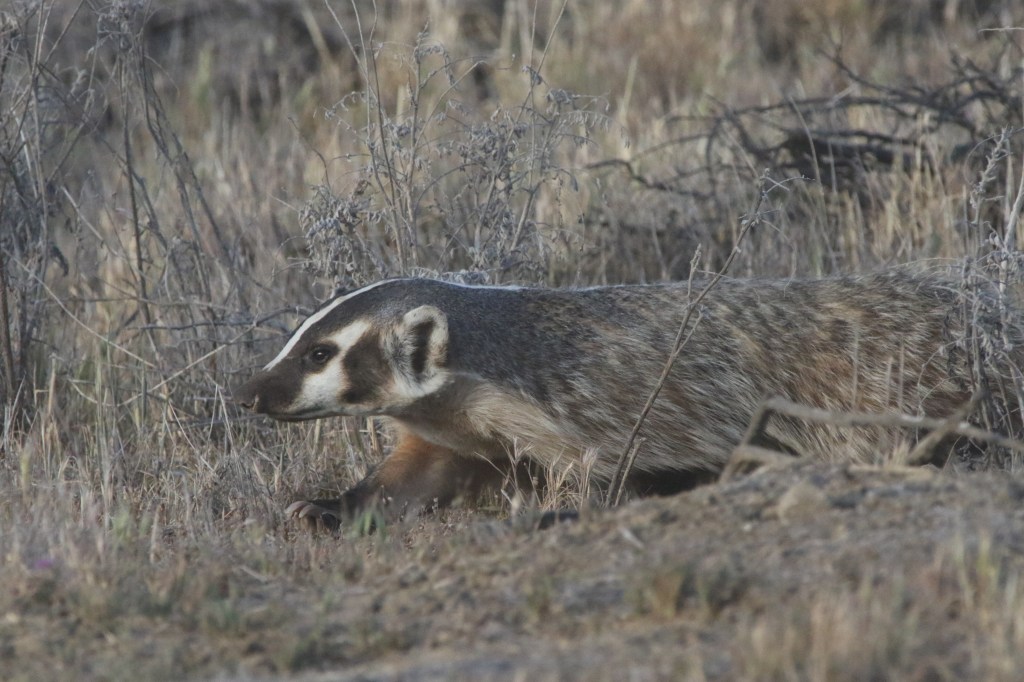

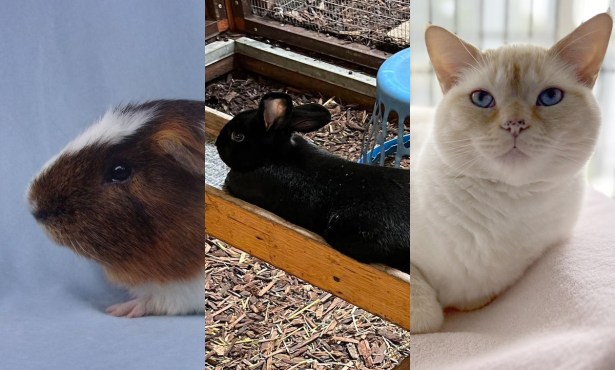


You must be logged in to post a comment.